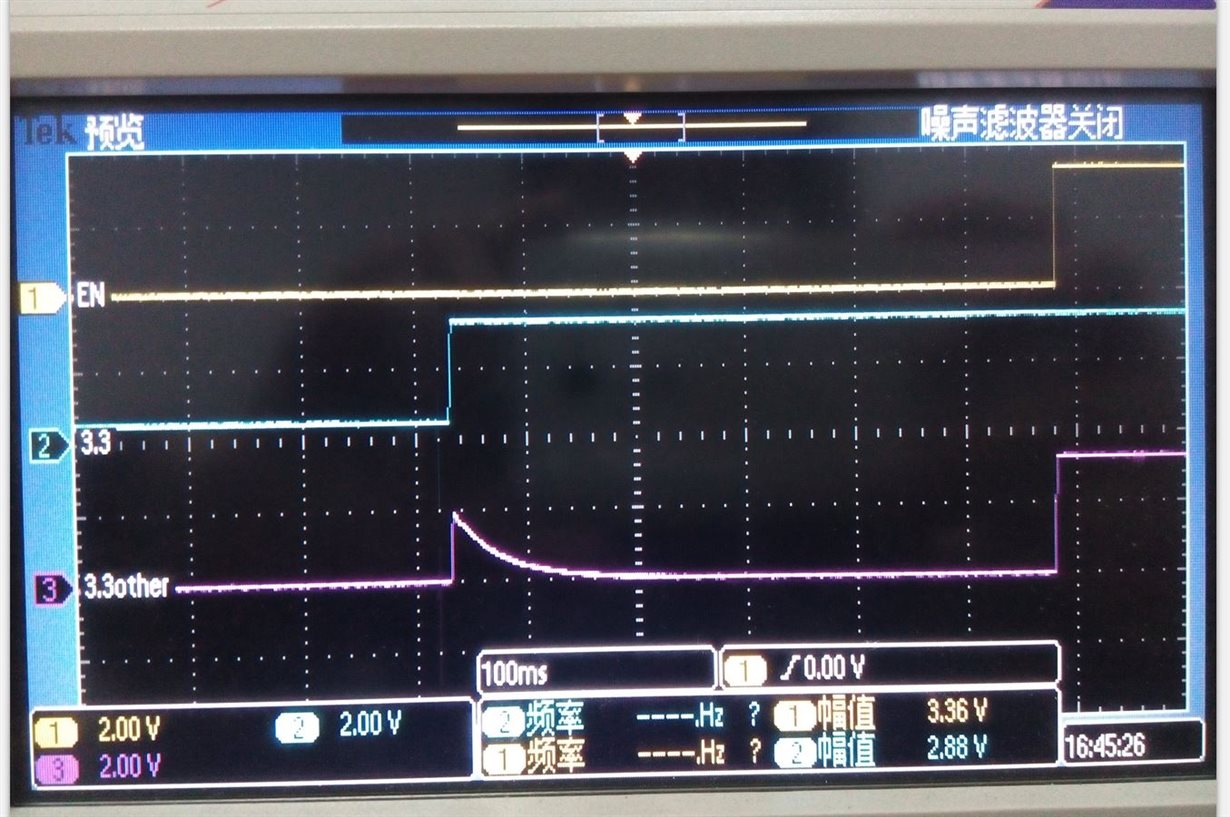Hi Mr Ron Michallick!
I met the same problem and learned some very useful information from your simulation in this post:
However, I have question about this simulation result.
I understand there'll be a giltch when VIN is supplied to loadswitch, BUT after a while, the R1C1 pin's voltage shall be gradually charged to VIN through R1 and C1, so the PMOS with turn off. the output voltage should be 0Vrather than 0.8V. How do you see my analysis? the following is my sch and test waveform(CH1 is Enable, CH2 is VIN, CH3 is VOUT ).
some more question, could you please help? Thanks a lot!
(1) As you suggested, the TPS27802L have better OFF performance as "The TPS27082L will short out R1 with ON/OFF pin is low." but I did not found this information in 082L's datasheet. The probably similar description is in section 8.2.2.4:"When a capacitor C1 is present the VIN to VOUT coupling is capacitive and is set by the C1 to CL capacitance ratio". How should I interprate "set by ratio C1/CL"?
(2)compare the datasheet's front page of 081A and 082L, I found the schematic symbols of Q1 and Q2 are different in those two devices. It is clear that 082L uses Enhancement MOSFET while the 081A uses JFET? I am not sure about this .....



